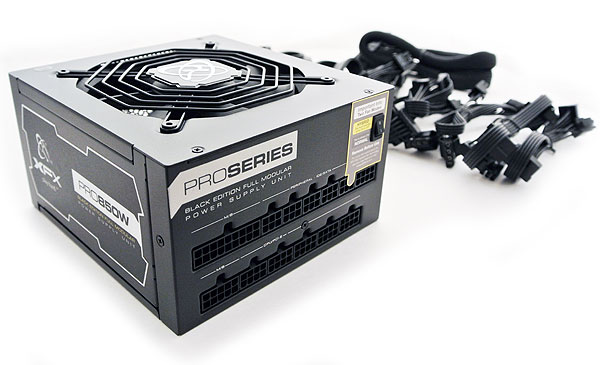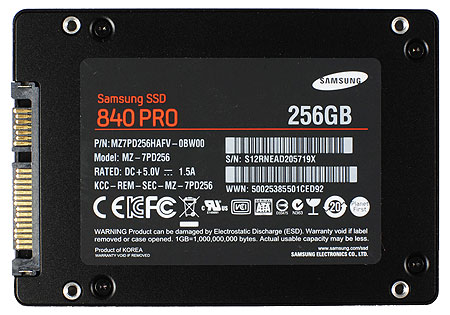Nvidia GeForce GTX 970 And 980 Review: Maximum Maxwell
Test System And Benchmarks
Benchmarking Hardware And Software
The GeForce GTX 980, 9970, and 780 Ti were tested with the 344.07 launch driver, band all of the Radeon cards were outfitted with the Catalyst 14.7 release candidate for testing.
We selected a variety of newer game titles with high detail settings at a resolution of 1920x1080 in order to give the GeForce GTX 970 and its competitors a solid, real-world workload that this class of card should be able to handle. Frankly, it surprised us with its formidable capabilities.
The factory-overclocked EVGA GeForce GTX 970's core clock was dropped to the 1050/1178 MHz nominal/boost reference specification in order to show what a typical specimen should be able to accomplish. Keep in mind that there is no reference cooler for this card, so all GeForce GTX 970s will be unique in this respect.
Two of the games we're testing have an option to use a Mantle code path, so we're running those benchmarks (Thief and Battlefield 4) with Mantle enabled and disabled to measure the API's impact.
High-end graphics cards require a substantial amount of power, so XFX sent us its PRO850W 80 PLUS Bronze-certified power supply. This modular PSU employs a single +12 V rail rated for 70 A. XFX claims continuous (not peak) output of up to 850 W at 50 degrees Celsius.
We've almost exclusively eliminated mechanical disks in the lab, preferring solid-state storage for alleviating I/O-related bottlenecks. Samsung sent all of our labs 256 GB 840 Pros, so we standardize on these exceptional SSDs.
| Header Cell - Column 0 | Test System |
|---|---|
| CPU | Intel Core i7-3960X (Sandy Bridge-E), 3.3 GHz, Six Cores, LGA 2011, 15 MB Shared L3 Cache, Hyper-Threading enabled. |
| Motherboard | ASRock X79 Extreme9 (LGA 2011) Chipset: Intel X79 Express |
| Networking | On-Board Gigabit LAN controller |
| Memory | Corsair Vengeance LP PC3-16000, 4 x 4 GB, 1600 MT/s, CL 8-8-8-24-2T |
| Graphics | Reference GeForce GTX 9801126/1216 MHz GPU, 4 GB GDDR5 at 1753 MHz (7000 MT/s)EVGA GeForce GTX 9701165/1365 MHz GPU, 4 GB GDDR5 at 1753 MHz (7012 MT/s)(underclocked GPU to reference 1050/1178 MHz specification for benchmarks)Nvidia GeForce GTX 780 Ti875/928 MHz GPU, 3 GB GDDR5 at 1752 MHz (7008 MT/s)Nvidia GeForce GTX 7701046/1085 MHz GPU, 2 GB GDDR5 at 1752 MHz (7008 MT/s)AMD Radeon R9 280X850/1000 MHz GPU, 3 GB GDDR5 at 1500 MHz (6000 MT/s)AMD Radeon R9 290947 MHz GPU, 4 GB GDDR5 at 1250 MHz (5000 MT/s)AMD Radeon R9 290X1000 MHz GPU, 4 GB GDDR5 at 1250 MHz (5000 MT/s) |
| SSD | Samsung 840 Pro, 256 GB SSD, SATA 6Gb/s |
| Power | XFX PRO850W, ATX12V, EPS12V |
| Software and Drivers | |
| Operating System | Microsoft Windows 8 Pro x64 |
| DirectX | DirectX 11 |
| Graphics Drivers | All GeForce Cards (except GTX 770): Nvidia 344.07 Launch DriverAll Radeon cards: AMD Catalyst 14.7 RC 1GeForce GTX 770: Nvidia 340.52 WHQL |
| Benchmarks | |
|---|---|
| Watch Dogs | Version 1.04.497, Custom THG Benchmark, 90-sec FRAPS, Driving |
| Arma 3 | V. 1.26.126.789, 30-sec. Fraps "Infantry Showcase" |
| Battlefield 4 | Version 1.3.2.3825, Custom THG Benchmark, 90-Sec |
| Assassin's Creed IV: Black Flag | Custom THG Benchmark, 40-Sec |
| Thief | Version 1.6.0.0, Built-in Benchmark |
| Grid Autosport | Version 1.0.101.4672, Built-In benchmark |
| Far Cry 3 | Version 1.05, Custom THG Benchmark, 55-sec FRAPS |
We'd like to voice our appreciation to Damian and the folks at Memory Express in Canada who helped us with some last-minute equipment requirements in order to perform the benchmarks for this review. Thanks, gents!
Get Tom's Hardware's best news and in-depth reviews, straight to your inbox.
Current page: Test System And Benchmarks
Prev Page EVGA GTX 970 Superclock ACX 2.0 Next Page Results: Battlefield 4 And ThiefDon Woligroski was a former senior hardware editor for Tom's Hardware. He has covered a wide range of PC hardware topics, including CPUs, GPUs, system building, and emerging technologies.
-
lancear15 I was waiting for Tom's review to make my final decision, the 980 is definitely going into my current 5960x build! I cant wait.Reply -
HKILLER so how long before you do a round up?i mean this time i've seen some pretty crazy looking cards (Zotac's Extreme AMP! edition looks crazy and the Inno3D too)and EVGA has shown off ACX 2.0 which they claim to be the most efficient GPU air cooler in the world...so many to choose from also EVGA FTW has been nicely overclocked i've seen it performing almost on par with 980Reply -
realibrad byt he way... Last page 2nd sentence after the graph of Avg game performance.Reply
I was hoping for more performance but the efficiency is quite nice. They just put pressure on the top end and gave us a price reduction, instead of overall performance gains. -
balister Very nice, but I still want to see what the power consumption along with what might be possible with the drop to 20nm (since this is still 28nm).Reply
Likely, we're going to see a Maxwell Titan equivalent come in the next year or so as these are a x04 much like Kepler with the 670/80s were and we're still going to be waiting to see what the x10 will be with the Maxwell architecture. -
MANOFKRYPTONAK Why didn't you include an overclocking comparison? Why didn't you include the 780, but included the 770? Doesn't make much sense...Reply -
vertexx 970 is the real story until the 980ti comes out - what a value proposition with the 970!Reply
Good stuff here - but you guys were a bit slow on this one. Tom's Hardware is the first site I visit every morning. But with the delay of this article, I've been all over the net this morning on other sites that got their stuff out sooner. -
daveys93 Will there be a follow-up article about overclocking these cards? Other sites are showing results that both of the new cards are capable of 1500+ MHz on air (aftermarket coolers and even a few with stock coolers), which is a massive overclock. Looks like NVIDIA left the door open for some decent voltage increases, but many results have been in the 1450-1500 MHz range at stock voltage. I am a big fan of the thoroughness of Tom's articles so I am very interested in seeing overclocking results and analysis from this site.Reply

